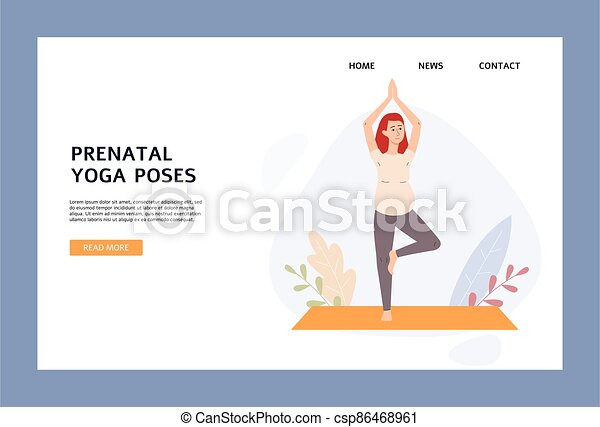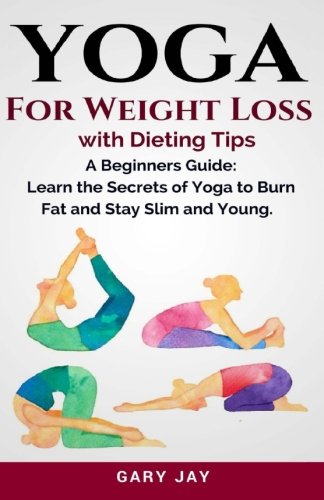
Many people have musculoskeletal injuries when practicing yoga. While wrist-weighted yoga poses pose a risk for injury, there are many ways to avoid them. Incorrect wrist alignment can result in sprains and even breaks. During these exercises, the wrist and fingers should be spread evenly and firmly. Avoid these injuries by using safe postures and adhering to instructions.
Researchers are reporting an increasing number injuries to yoga. The number of yoga injuries has increased from 13 to twenty in 2000 to twenty in 2001 and eight to 46 to 2002. The Consumer Product Safety Commission survey uses samples and does not provide a complete picture. A small number of yoga injury victims go to emergency rooms. Most seek treatment from family doctors, chiropractors, or massage therapists. While yoga is a great way to prevent injury, it's important to recognize the limitations in research.
Injuries in yoga are often the result of improper alignment. You could be at risk of injury if you aren't able to properly align your body. Proper alignment is key to avoiding injury during yoga. Your teacher should have proper biomechanics training. A safe and effective class requires the use of correct body mechanics. If your instructor does not know the right technique, you're at risk of developing an injury.

Rotator Cuff and shoulder muscles are vulnerable to injury. Also, rotator-cuff injuries can occur when the wrists and hands are twisted in certain poses. Furthermore, the sun salutations are a series of poses that puts the body's weight on the upper extremity and are often associated with an impingement of the rotator cuff. These positions are especially dangerous when repeated and repetitive forward bending is used, stretching and overusing the hamstrings.
Yoga can cause many injuries. Muscle and joint problems are the most common. These problems aren't life-threatening and are usually mild. Yoga poses can help you to manage your condition if it is already severe. Overexertion can cause damage to the shoulder and rotator cuff, which are delicate muscles. Therefore, you should pay special attention to your rotator cuff and make sure that it is functioning properly.
You should not do dangerous yoga poses. However, there are common injuries that can occur. Text neck is the most common. It occurs when people are too dependent on their phones. Avoiding these positions can help prevent injury to the neck muscles. The more you practice, the more you'll benefit from your practice. There are many causes of injuries in yoga, but most are preventable.
The low back is a common injury in yoga. An injury to the low back can result from excessively bent or twisted joints. People who have been injured in the past may be more susceptible to this condition if they do not align their bodies correctly. Overworking the shoulder can cause injury to yoga. Injuries to the upper extremities can include the clavicle (humerus), the scapula, and the humerus.

Improper technique is what causes most yoga injuries. A yoga injury can be caused when the neck, hips or other joints are overstrained. An orthopedist would recommend listening to your body and avoiding any strenuous positions. The neck can be straining if you do too much. A neck injury can take time to heal so it is best to avoid more vigorous yoga. This will help avoid any future complications.
While the incidence of yoga-related injuries is low, it is important to know that certain postures can cause pain, which can be painful. Fortunately, these types of injuries do not happen frequently. These types of injuries are caused by repetitive stress or overstretching. When yoga is not done correctly or with proper warming up, injuries are common. Practitioners who are not fully aware of the risks associated to the poses can inflict injuries.
FAQ
Do I have to exercise while drinking alcohol?
Yes. Alcohol increases energy expenditure, speeds up recovery times, and reduces soreness.
Additionally, alcohol can increase insulin sensitivity and make it easier to absorb glucose.
Dehydration can result from alcohol, which can affect your metabolism. Alcohol can also lower testosterone production, which could lead to a decrease in muscle-building potential.
For these reasons, women shouldn't drink alcoholic beverages before working out. Women who have consumed a lot of alcohol should wait at most 24 hours before working out.
Nursing mothers should abstain from alcohol as much as they can.
Men should drink only one glass of alcohol per day.
Does Weightlifting Burn Fat Faster?
Although weight lifting can help you lose fat more quickly, it is best to combine it with cardio exercises.
It is important to do weightlifting right after cardio exercise in order to reap the full benefits.
Weightlifting is a good way to lose weight. It increases your heart beat and oxygen consumption.
You will not notice any changes in your body composition if you don’t combine it and cardio.
What is the best 7-day workout program?
A seven-day program should include three days of cardio training (running, biking and swimming), two strength exercise (using free weights or weight machines) and one flexibility/core work out (yoga, Pilates). It is important to complete each activity at least once weekly. Each session should not take more than 45 mins.
Cardiovascular Exercise: Running/Biking/Swimming
You should aim to get at least 60 mins of cardio exercise per week. To achieve the best results, aim to exercise for at least 75 minutes each week. Cardio exercise can improve blood flow and stimulate muscle development.
Strength Training
While cardio exercises target the heart and lungs, strength training targets the muscles and bones. Strength training helps you burn calories even while resting.
Flexibility and Core Workouts
Flexibility and core workouts are great ways to strengthen your entire body. Both yoga and Pilates are excellent options.
Is Cardio Exercise Good Or Bad For Your Health?
Cardiovascular exercise can have many benefits. It increases blood circulation, strengthens the heart muscle, boosts stamina, aids in weight loss, and gives you more energy.
Cardiovascular exercise includes running, biking, hiking, swimming, tennis, basketball, soccer, volleyball, football, etc.
Cardio exercises should not be done at high intensity. Doing this could lead to injury.
The cardiovascular exercise should only be performed if you feel good.
You should never push yourself beyond your limits. Otherwise, you could end up injuring yourself.
It is important to warm up before you begin any cardiovascular exercise. Start slowly increasing your intensity.
Remember, you should always listen to your body. If you feel pain during cardiovascular exercise, stop immediately.
After a cardiovascular training session, it is recommended that you take some time to relax. This allows your muscles time to recover.
Cardiovascular exercise can help you lose weight.
It is the most effective way to burn calories and reduce belly fat.
How many calories per day should I consume?
This can vary from person to person. On average, you need 2000 to 2500 calories per days. Based on your age, gender, height and activity level, you will need to calculate how many calories you require.
What does milk do for men?
Consider what other uses you might have for your milk next time that you buy it. It may be a good idea to reduce your coffee intake.
It has been proven that milk is beneficial for both children and adults. Children get nutrients like vitamin D, calcium and potassium from milk.
It helps with digestion, promotes weight growth, and improves bone strength. Milk products can help adults have better immunity systems and less illness.
The lactose in milk is also high, so people with digestive problems can enjoy the benefits of milk without experiencing stomach discomfort.
Try drinking more milk instead of soda or juice. The extra calcium and vitamin D found in milk can help strengthen your teeth and bones.
You can make yogurt with plain low-fat milk if you don't love the taste of milk. Yogurt has lower calories and is richer in protein than milk.
Yogurt also contains probiotics, which aid in digestion and improve immunity.
If you're having trouble sleeping, try taking a glass of warm milk before bedtime. Warm milk can relax muscles and increase serotonin levels. This will help you sleep well.
Statistics
- An estimated calorie range for moderately active adult males falls between 2,200 to 2,800 calories per day, depending on age. (eatright.org)
- 10 pounds in a month is likely during a lean bulking phase, especially for beginners. (muscleandstrength.com)
- By John Thompson Take a whopping 38% off a set of PowerBlock Pros. (menshealth.com)
- The PRS enabled risk stratification for overall prostate cancer and lethal disease with a four-fold difference between men in the highest and lowest quartiles (HR, 4.32; 95% confidence interval [CI], 3.16-5.89). (pubmed.ncbi.nlm.nih.gov)
- Cardmembers earn 5% Back at Amazon.com with a Prime Credit Card. (amazon.com)
External Links
How To
How do I lose weight while working out?
Exercise burns calories through increased metabolism and oxygen consumption.
Exercise at a moderate intensity to safely lose weight.
These are the top tips for burning fat while you exercise.
-
Cardio exercises can include running, walking, swimming or cycling.
-
For 30 minutes, do it three times a week.
-
You can lose weight by adding strength training to the routine.
-
Avoid intense workouts. It is possible to build muscle without destroying muscle tissue.
-
During exercise, drink plenty of water. Water helps to flush out toxins from the body and maintains proper hydration.
-
After exercising, consume low-fat protein smoothies. Protein shakes boost energy and repair muscle tissue.
-
You can eat smaller meals throughout the day so that you don't feel hungry in between meals.
-
Don't skip breakfast! Skipping breakfast can make you tired and sluggish.
-
Take care to your mental well-being. Stressful situations can affect your metabolism.
-
Keep a positive attitude. Studies show that overweight people are more likely to be obese than those who perceive themselves as attractive.
-
Get enough sleep. You will have a harder time losing weight if you do not get enough sleep.
-
Keep active. Make sure you get up and move every hour.
-
Maintain a healthy diet. Healthy eating will keep you fuller and more satisfied for longer.
-
Find relaxation techniques. A tense mind doesn't allow your body to release stress hormones that break down muscle tissue.
A balanced diet provides all the nutrients necessary for growth and development.
Consider eating six small meals daily instead of three big ones. This gives your body time and energy to process the food.
You need about 500 milligrams of calcium daily to maintain strong bones. Calcium can be found in dairy products such as yogurt, fortified soybean beverages, orange juice, cereals, bread, and cereals.
Calcium is found in green leafy vegetables, beans, tofu, seeds, nuts, and cheese.
Vitamin D is necessary for the body to absorb calcium. Vitamin D is found in eggs yolk, fatty fish and fortified foods.
Vitamin E is important for skin health. Vitamin E is found in vegetable oils and wheat germ oil, as well as peanuts, almonds and sunflower seeds.
Your body requires zinc to function normally and for wound healing. Zinc is found in oysters, legumes, meats, whole grains, and seafood.
Zinc deficiency can cause fatigue and loss of appetite. It can also lead to depression and impaired immunity.
Insulin resistance is caused by eating too much sugar, which can increase blood glucose levels. Insulin resistance leads to weight gain.
High levels of free radicals can lead to insulin resistance. Free radicals are molecules with unpaired electrons that damage cell membranes and other parts of the body.
The most common sources of free radicals include food additives.
Free radical damage may lead to cancer, heart disease diabetes, arthritis, asthma and other conditions.
A well-balanced diet rich in antioxidants is the best way for you to avoid free radical damage. Antioxidants protect against oxidative damage.
Vitamin C (found on citrus fruits), Beta carotene, found in carrots and sweet potatoes, spinach and broccoli, cantaloupe (found in tomatoes, mangoes and peppers), and Vitamin E (found nuts, olive oil and avocados).
Selenium, copper and manganese are all antioxidant nutrients.
Selenium helps to protect cells against free radicals and oxidative stress. Selenium is found in Brazil nuts, tuna, liver, kidney, shrimp, cod, turkey, beef, lamb, pork, and chicken.
Copper protects your eyes, brain, eyes and red blood cell. Copper is also found in poultry, meat, and organs.
Manganese forms an essential part of bone structure. Manganese is found as a component of bone structure in brown rice (spinach, bananas), prunes, raisins and oatmeal.
Zinc is necessary for average growth, reproduction, and wound healing. Zn is found in lean cuts of meat, white fish, poultry, and eggs.